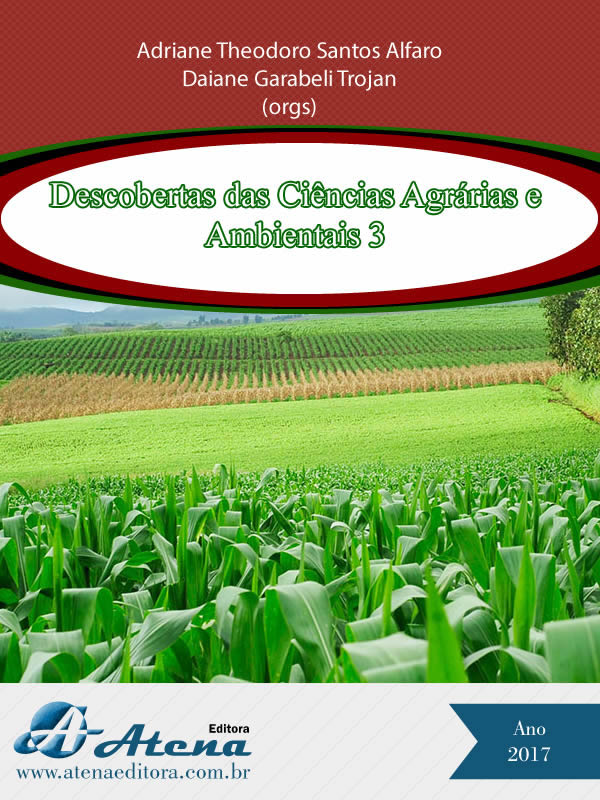
PRODUÇÃO DE MUDAS DE MARACUJAZEIRO-AMARELO EM DIFERENTES SUBSTRATOS E RECIPIENTES
O presente trabalho teve por objetivo avaliar o efeito de diferentes
substratos e recipientes na produção de mudas de maracujazeiro-amarelo
(Passiflora edulis). Utilizou-se sacolas de polietileno - R1- (12 x 20 cm) e bandejas
de polietileno - R2- (32 células, 54,5 cm x 28 cm x 12cm), contendo substratos a
base de areia, terra vegetal, pó de serra e vermiculita nas seguintes proporções: S1
(areia lavada + terra vegetal + vermiculita, na proporção volumétrica de 1:1:1 v/v);
S2 (areia lavada + terra vegetal pó de serra, na proporção volumétrica de 1:1:1 v/v)
e S3 (areia lavada + terra vegetal + vermiculita + pó de serra, na proporção
volumétrica de 1:1:1/2: 1/2 v/v). O delineamento estatístico utilizado foi
inteiramente casualizado em esquema fatorial 3x2 com 5 repetições, totalizando
30 unidades experimentais e as médias foram comparadas pelo teste de Tukey, a
5% de probabilidade. Foram avaliadas as variáveis número de folhas, diâmetro do
colo, altura das plantas, comprimento do sistema radicular; massa seca da parte
aérea, do sistema radicular e total, relação entre massa seca da parte aérea e do
sistema radicular. Também foi calculado o índice de clorofila A e B, com o auxílio do
clorofiLOG. De acordo com os resultados, o substrato S1 e o recipiente R1 foram os
tratamentos mais apropriados para a produção de mudas de maracujazeiro
amarelo.
PRODUÇÃO DE MUDAS DE MARACUJAZEIRO-AMARELO EM DIFERENTES SUBSTRATOS E RECIPIENTES
-
DOI: Atena
-
Palavras-chave: Passiflora edulis, sacolas de polietileno, resíduos.
-
Keywords: Passiflora edulis, polyethylene bags, waste
-
Abstract:
This work aimed to evaluate the effect of different substrates and
containers on the production of passion fruit seedlings (Passiflora edulis).
Polyethylene bags - R1- (12x20 cm) and polyethylene trays - R2- (32
cells, 54.5cmx28cmx12cm), containing sand-based substrates, vegetable soil, saw
dust and vermiculite in the following proportions: S1 (washed sand + vegetal soil +
vermiculite, in the volumetric ratio of1:1: 1 v/v); S2 (washed sand + vegetal soil +
saw dust, in thevolumetric ratio of 1:1: 1 v/v) and S3 (washed sand + vegetal soil
+vermiculite + saw dust, 2:1/2 v/v). The statistical design was completely
randomized in a 3x2 factorial scheme with 5 replicates, totaling 30 experimental
units and the averages were compared by the Tukey test, at 5% probability. The
following variables were evaluated: number of leaves, neck diameter, plant height,
root system length; dry mass of aerial part, root system and total; relation between
dry mass of the aerial part and the root system. The chlorophyll A and B index was
also calculated with the aid of clorofiLOG. According to the results, substrates S1
and container R1 were the most appropriate treatments for the production of yellow
passion fruit seedlings.
-
Número de páginas: 15
- Carolina Haber Mellem


